|
Regional History History of Timbering County Histories Oral Histories Calhoun County Gulf County Ronnie Brake Dave Maddox Tom Parker Jackson County Wakulla County |
History: Voices from Gulf County
Captain Dave Maddox
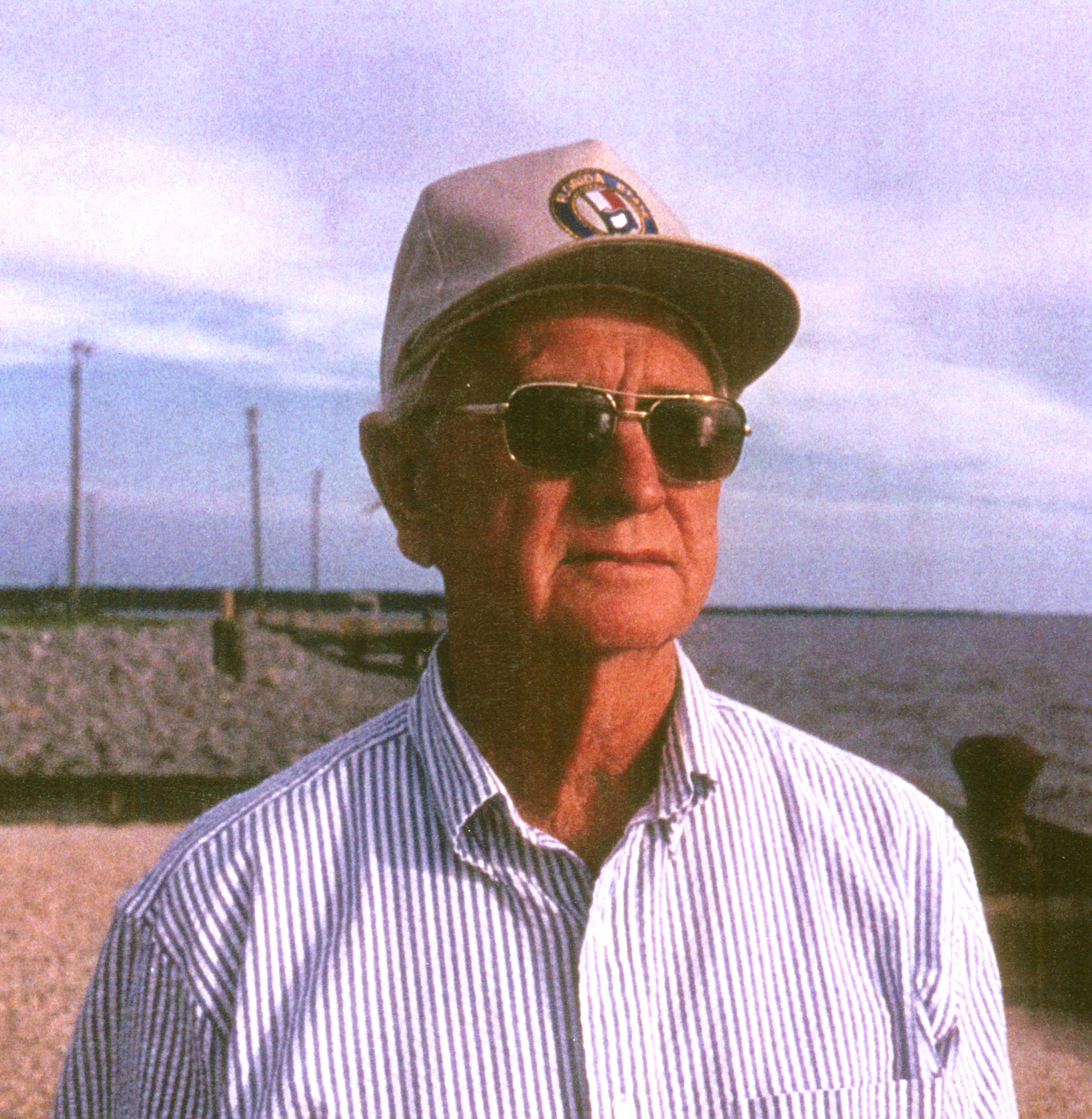 Dave Maddox on dock at Port St. Joe, 1995 |
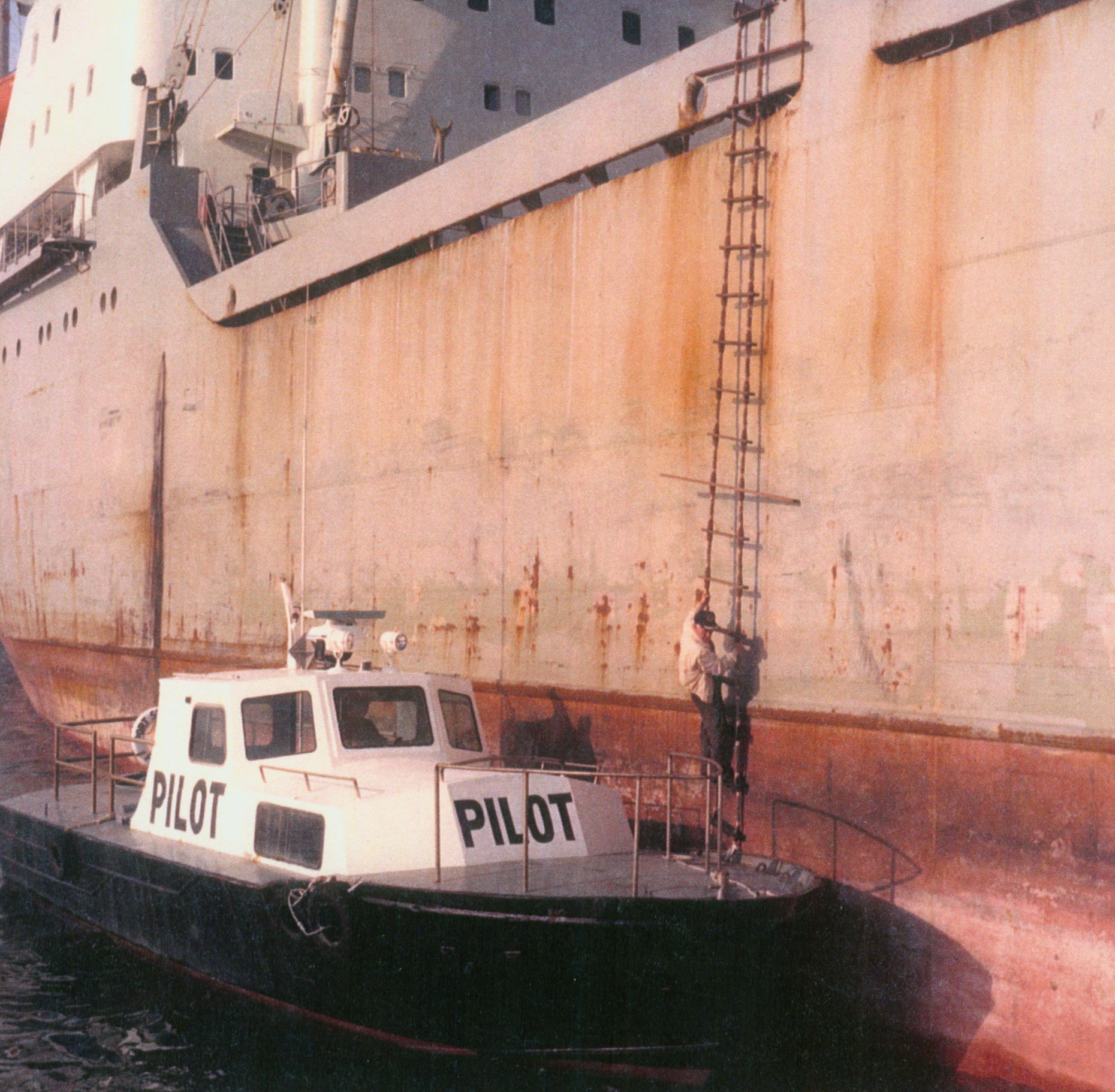 Dave Maddox disembarking a freighter, 1970 |
Captain Dave Maddox was born September 12, 1921, in Apalachicola, Florida. For many years Captain Maddox was a harbor pilot, guiding ships safely through St. Joseph Bay to the docks at Port St. Joe. He learned the trade from his father Fred Maddox who in turn had learned to pilot ships from his father John Maddox. In those days you had to serve an apprenticeship before you could become a harbor pilot. While still in high school, Dave Maddox operated the pilot boat and steered ships for his grandfather. Upon graduation from high school, he completed the final requirement of his apprenticeship, going to sea on merchant ships.
Captain Maddox recalls the visit of the USS Constitution, known as Old Ironsides, to St. Joseph Bay March 16,17, and 18, 1932. His granddaddy John Maddox piloted the Constitution into port and his father Fred was piloting the tug that was towing it. Considered too young to go along, 11-year-old Dave had to remain on shore. Built in 1794 and one of the original three frigates of the U.S. Navy, the Constitution attracted vast numbers of visitors from surrounding cities and towns while docked at Port St. Joe.
 The USS Constitution, "Old Ironsides," Photo of painting from the US Naval Museum |
Captain Dave Maddox's great grandfather William Sanders Maddox came to Apalachicola in 1848 to oversee the exporting of cotton for his father John Wesley Maddox, who had a cotton plantation between Columbus and Macon, Georgia. In 1893, William Maddox's son, also John Wesley and his brother Dave, moved their cattle from the Apalachicola area to the head of the St. Joseph Bay where the abundance of saltwater Bermuda grass afforded better grazing range. The brothers built a small house in Gautier Hammock where they lived until 1896.
Captain Maddox recounted the move of his grandfather and his family to nearby Black's Island in the late 1800s. The lighthouse service had decided to build a lighthouse on Black's Island as the lighthouse over on Cape San Blas had washed away two or three times. The family moved to the island for a time but the light was never built.
Listen to Dave Maddox's description of why the light was never built: Real Network | Windows Media Player
Click here to read the text of the audio about why the light was never built.
Early in the 1900s, a group of businessmen from St. Louis had a vision: harvesting virgin long leaf pine, cutting it at local sawmills and transferring it by a railroad running from Chattahoochee to Port St. Joe, and then shipping it to far off ports in the eastern United States and Europe. At the time cargo was shipped on both sailing ships and steamships. In 1905, Captain Maddox's father Fred, his uncle Roy, and his grandfather John Wesley were hired to sound along the shore, to find the deepest water for the dock. Captain Maddox explained how they choose the location of the dock.
Listen to Dave Maddox's description of how they chose the dock location:Real Network | Windows Media Player
Click here to read the text of the audio about how they chose the dock location.
By 1909, the railroad was completed to St. Joseph Bay and work began on a dock where the present marina is located. A bunkhouse for workers was built on Shipyard Cove, a shipyard in the early 1800s. As a young man, Fred Maddox lived in the bunkhouse and helped build the dock, which was completed in 1910. In April 1910, the Swedish sailing vessel the Henrietta was the first ship to dock and load lumber at the new dock. She was piloted by John Maddox. By 1913 the Calhoun Lumber Company had constructed one of the largest sawmills in Florida adjacent to the railroad and dock.
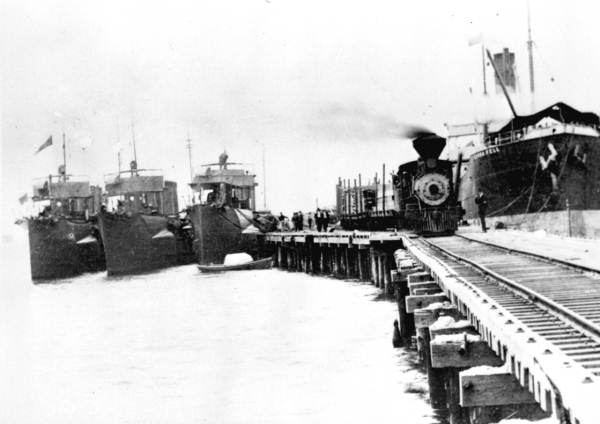 |
The waterfront was a glorious place complete with a windmill-operated water slide, a bathhouse, a casino, and a bandstand. Passenger trains arrived from Apalachicola - sometimes twice a day. According to local historian Wayne Childers, the water was “as clear as the air” and people would go out on the railroad dock and gig fish. Red fish and sheepshead were so plentiful you couldn't give them away.
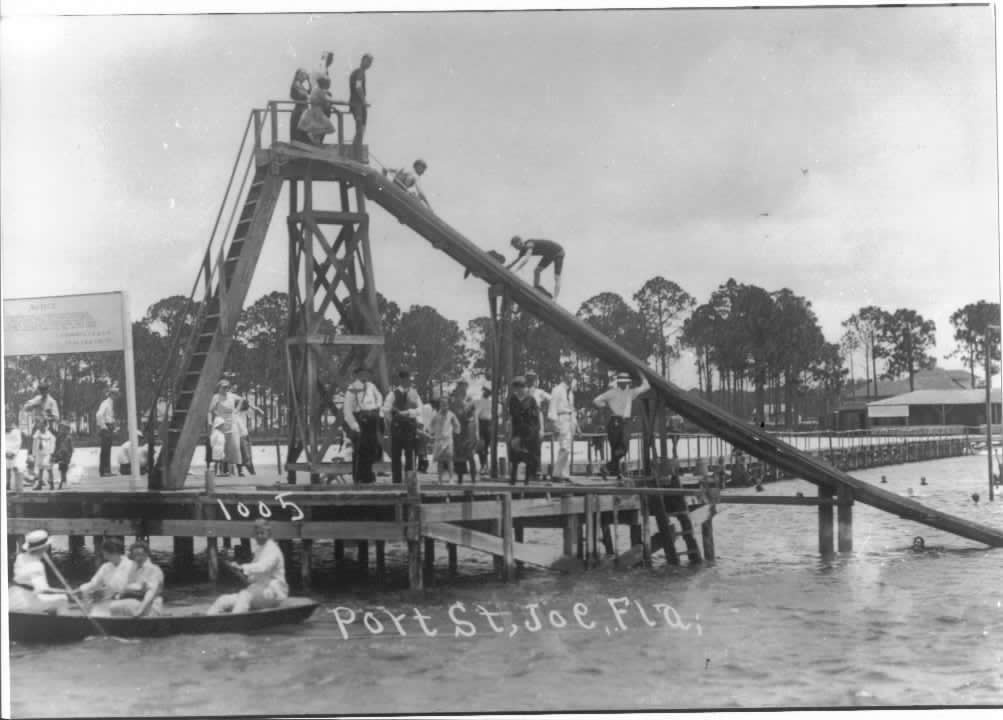 |
As lumber was being loaded onto the ships, pieces would fall from the slings into the bay and drift ashore. From this lumber Fred Maddox built a house on Shipyard Cove on property that he leased and later purchased. Fred, John, and Roy Maddox lived in the house while providing piloting services for the new port. In 1919 upon returning from World War I, Fred Maddox married schoolteacher Zola McFarland from Frink, Florida. Their son Dave Maddox was born in 1921. They lived in the house Fred had built until it burned in 1928. Another house was built where the present one stands, but it was torn down so the current house could be built in 1937.
In the late 1930s the Maddox property was the only waterfront property that had not been conveyed to the St. Joe Company from St. Louis Lumber. When Ed Ball and his coterie of lawyers claimed the Maddox property, the Maddoxes enlisted two lawyers of their own. A Marianna court ruled that the Maddoxes did indeed own the land, having made interest payments faithfully over the years. Ball then tried to put building restrictions on the Maddox property through the Supreme Court in Tallahassee. He ultimately lost again and handed over the deed with no restrictions to the Maddox family in November 1939.
“Captain Fred and Miss Zola” lived on this property for more than 60 years. Captain Fred died in 1977, and Miss Zola died in 1982.
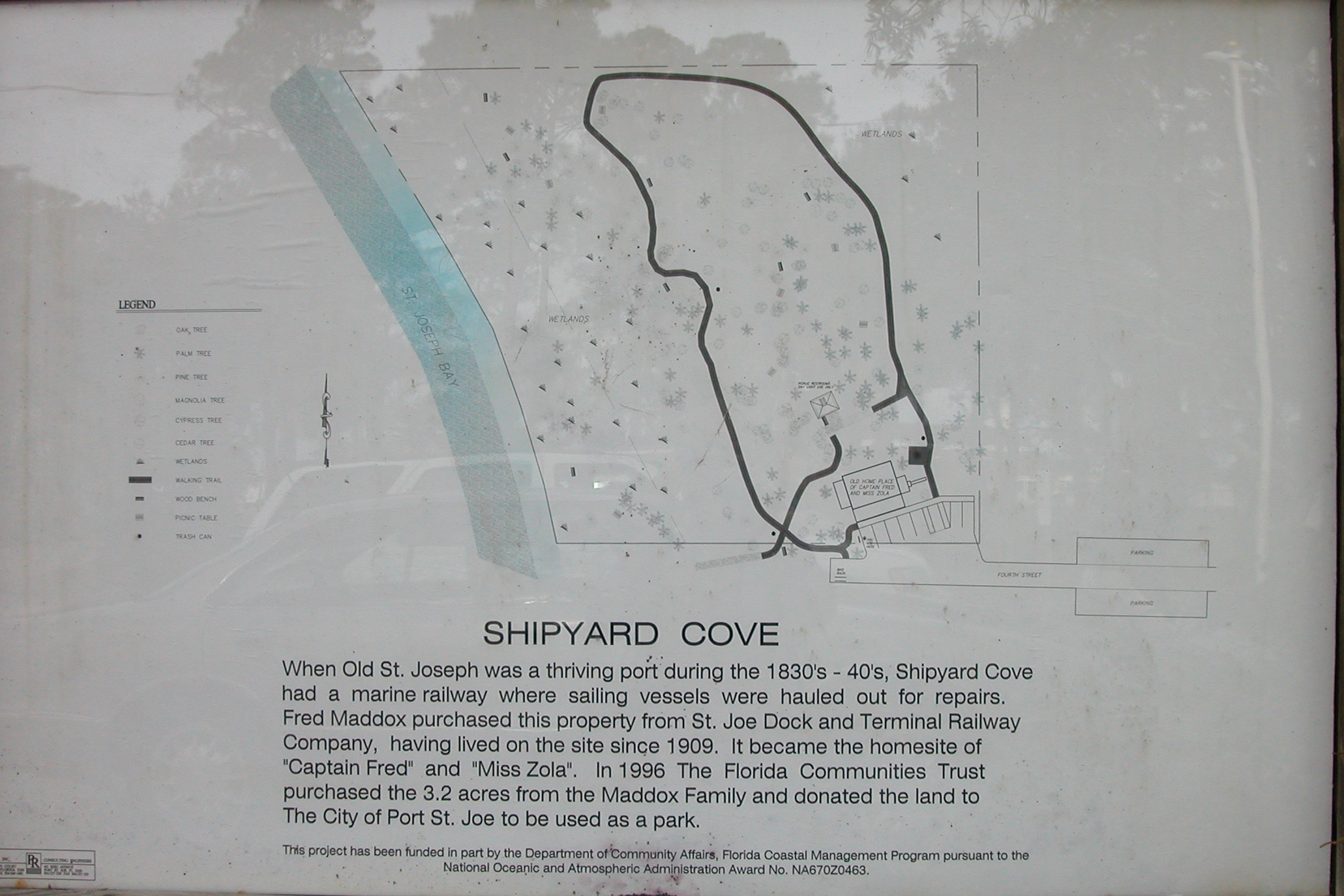 |
 Dave Maddox's parents, Fred and Zola Maddox, in their front yard, 1967 |
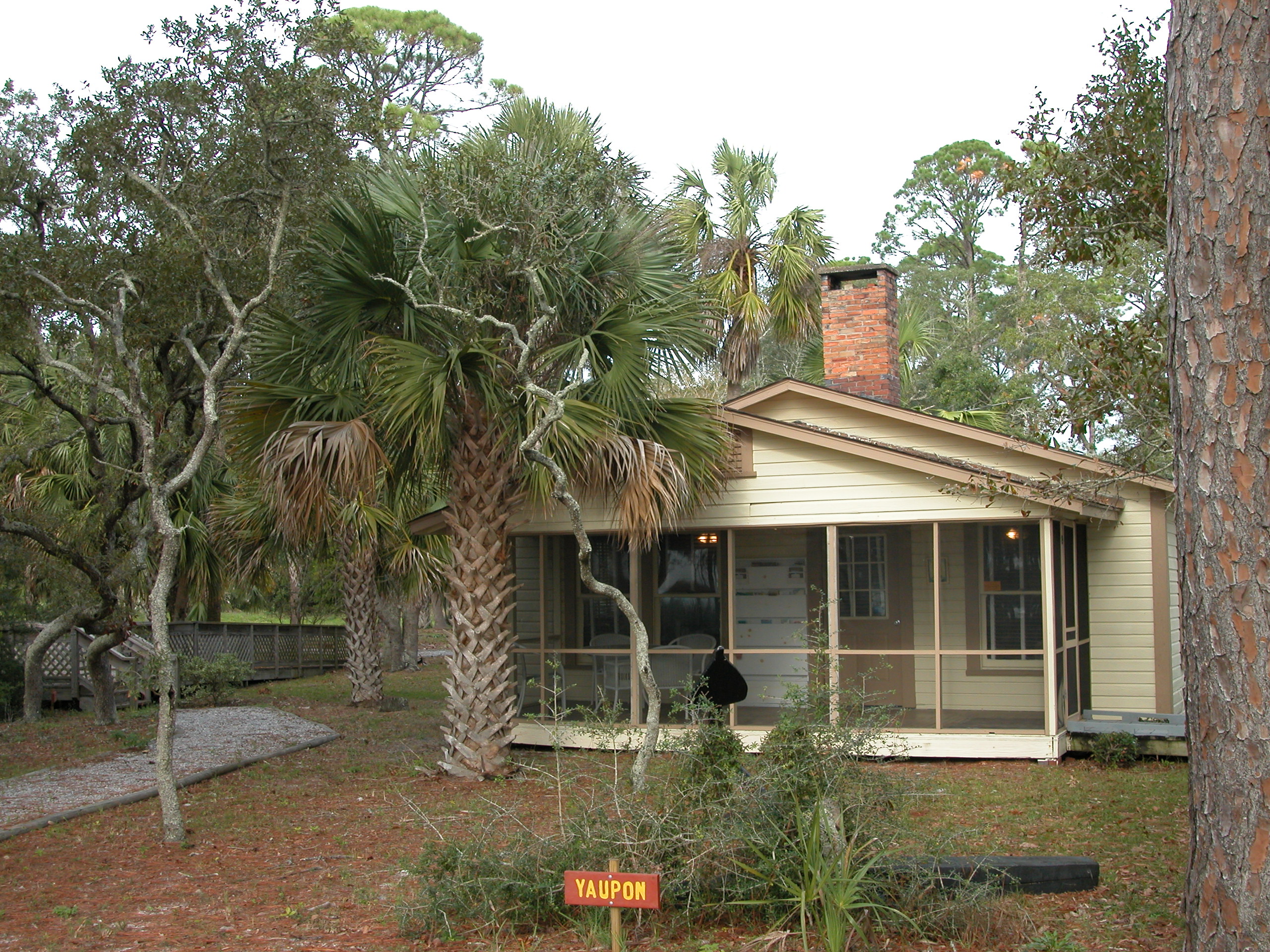 The Maddox House in 2005 |
Captain Maddox was an eyewitness to the sinking of the Panamanian ship the Vamar off Mexico Beach on March 19, 1942. The Vamar was on its way to Guantanomo Bay, Cuba, with a shipment of lumber from the St. Joe Lumber and Export Company. He was on the tug that went out to offer assistance. Much speculation surrounds the sinking of the Vamar. Some accounts blame overloading and shifting of cargo. Others see the sinking as war-time sabotage aimed at blocking the shipping channel. Based on what he observed and what he was told by harbor pilot Melvin Beck, Captain Maddox has another view of the event. Today the wreck of the Vamar is a State Underwater Archaeological Preserve.
Listen to Dave Maddox's description of the sinking of the Vamar : Real Network | Windows Media Player
Click here to read the text of the audio about the sinking of the Vamar .
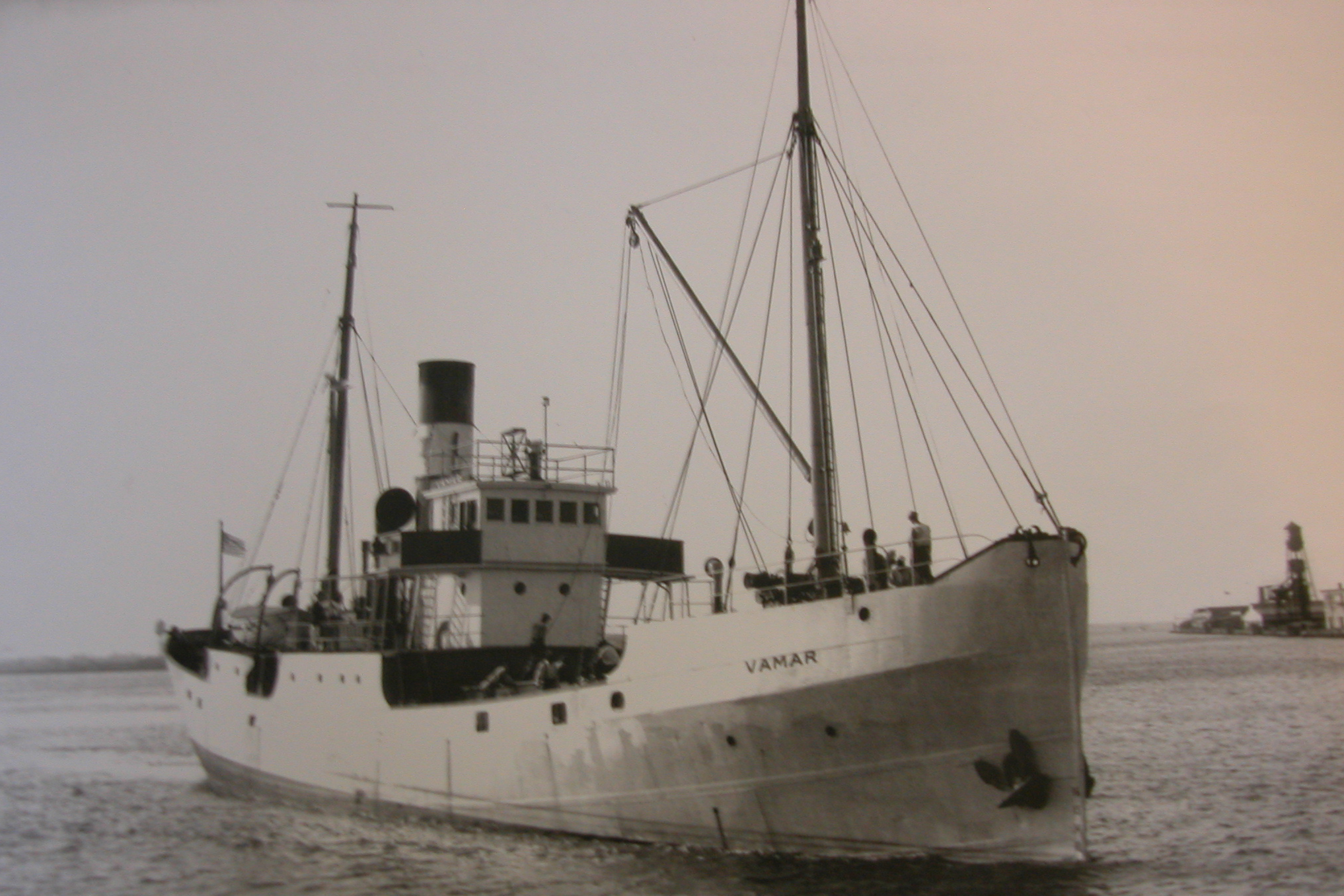 The Vamar |
According to Captain Maddox, before World War II, the St. Joseph Peninsula was worthless and only accessible by boat or on horseback. His father ran hogs and cattle—a combination of Brahman and native cows—on open range on the peninsula for many years. The cattle did very well except in September during dog fly season when they would go out in the bay and stand nose-deep in the water to get away from the flies. They wouldn't leave the protection of the water to graze or to seek freshwater.
Captain Maddox recalls when the government took over the peninsula during World War II and again during the Korean War.
Listen to Dave Maddox's description of the peninsula's use during World War II>: Real Network | Windows Media Player
Click here to read the text of the audio about the peninsula's use during World War II.
Listen to Dave Maddox's description of the peninsula's use during the Korean War: Real Network | Windows Media Player
Click here to read the text of the audio about the peninsula's use during the Korean War.
After the World War II, Fred Maddox had to lease the land from the government to run his cattle on it. After the Korean War, the government bid off the land on the peninsula. Dave Maddox recalled how he, Jesse Stone, the son of one of the original founders of Port St. Joe, and others were able to preserve the northern end of the peninsula for a state park. Other parcels on the island were sold to individuals who began building vacation homes.
Port St. Joe continued to be “quite a busy little port” until the Colonial Pipeline was built from Houston through Baton Rouge and Birmingham, Atlanta, and Charlotte to Linden, New Jersey, supplanting an earlier pipeline from Port St. Joe to Chattanooga and ending most of the tanker traffic. Some paper continued to be shipped from the port until the paper mill closed in 1998. Today there is no shipping whatsoever from the once bustling port.
Captain Maddox laments the demise of the port and the changes that he sees being brought about by the St. Joe Company. People with families to support who lost their jobs when the paper mill closed have had to move elsewhere. Some have moved to Panama City to work in the mill there but according to Captain Maddox “people say that won't last more than 5 years.”
Listen to Captain Maddox's regrets about the decline of the Port St. Joe port: Real Network | Windows Media Player
Click here to read the text of the audio about the decline of the Port St. Joe port.
Listen to Dave Maddox's concerns about the future of Port St. Joe: Real Network | Windows Media Player
Click here to read the text of the audio about the future of Port St. Joe.
profile by Elizabeth D. Purdum
Note: The content of the website has not been updated since 2005. The site remains online for it's value as legacy content and is unlikely to be updated.